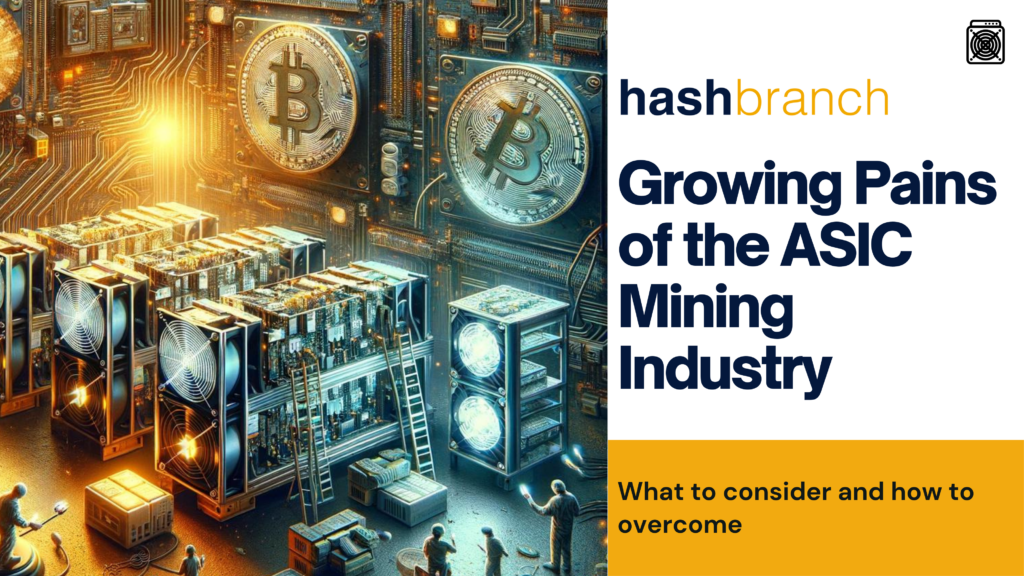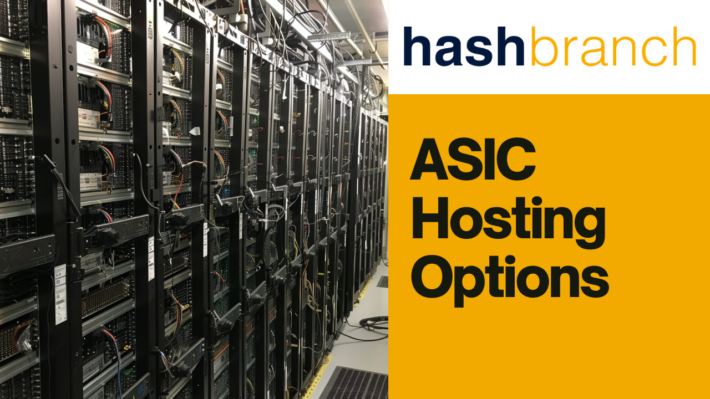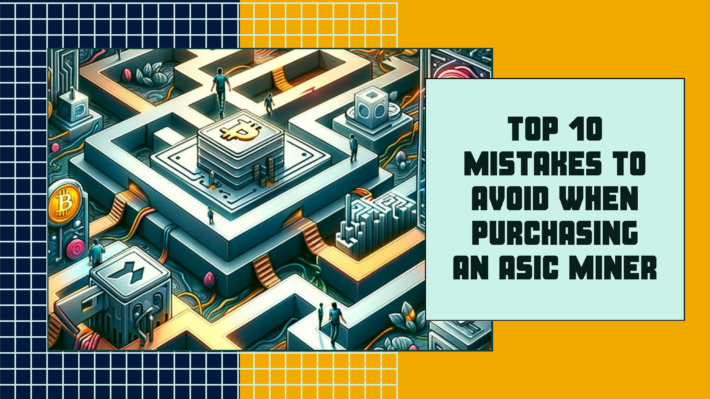Growing Pains of the ASIC Mining Industry

04/11/24 By Miner Dude
The ASIC mining industry, the backbone of blockchain’s proof-of-work mechanism, is no stranger to rapid evolution and the growing pains that accompany it. As we hurdle toward a future replete with both uncertainty and potential, miners stand at the crossroads of innovation and obsolescence, pondering the next moves to weather the industry’s seismic shifts.
The Current Landscape: Troubles Today
Today’s miners grapple with several hurdles. The high cost of energy and the subsequent push for greener mining solutions loom large, pressuring operations to adopt eco-friendlier practices without sacrificing output. There’s also the market’s volatility, where the fluctuation in cryptocurrency values can turn a profitable operation into a liability overnight.
Another pain point is the relentless march of technology, rendering current ASIC models outdated at a blistering pace. This rapid obsolescence requires constant capital investment to stay competitive. Additionally, the industry’s centralization in certain regions has sparked concerns over hash rate monopolies, potentially undermining the decentralized ethos of cryptocurrency.
Below are a simplified version of some of the pain points that we have found to be common in many who mine.
Rising Energy Costs: The most substantial operational cost for ASIC miners is electricity. Fluctuations in energy prices can greatly impact profitability and operational feasibility.
Environmental Concerns: The carbon footprint and environmental impact of ASIC mining operations have come under significant scrutiny, necessitating more sustainable and environmentally friendly mining practices.
Hardware Obsolescence: The rapid pace of technological advancement in ASIC hardware means devices can quickly become outdated, necessitating costly upgrades and replacements.
Market Volatility: Fluctuations in cryptocurrency values can dramatically affect mining profitability, with miners needing to adapt to unpredictable market conditions.
Hash Rate Centralization: The concentration of mining power among certain entities or regions poses a threat to the decentralized principles that many cryptocurrencies are built upon.
Supply Chain Disruptions: The availability of mining equipment is often vulnerable to global supply chain issues, causing delays and increasing costs for miners.
Network Scalability Issues: Challenges arise as blockchain networks struggle to scale with increased transaction volumes, potentially slowing down transaction processing and reducing mining profitability.
Regulatory Uncertainty: Shifting and uncertain regulatory landscapes across different jurisdictions can pose compliance risks and operational challenges for miners.
Security Threats: The risk of hacking and theft of mining rewards, alongside the potential compromise of mining rigs, presents a continuous security challenge.
Technical Complexity: The technical expertise required to set up and maintain mining operations can be a significant barrier to entry for newcomers to mining.
Access to Capital: The high initial investment required for ASIC mining equipment and infrastructure setup can be prohibitive, especially for smaller players or newcomers.
Internet Connectivity Reliance: Stable and fast internet connectivity is crucial for mining operations, and a lack of it in remote areas can be a significant hurdle.
Noise and Heat Generation: The significant heat and noise produced by ASIC miners necessitate specialized cooling and soundproofing solutions, adding complexity and cost to mining operations.
The Future: Anticipated Aches
We foresee the intensification of these current challenges, coupled with new ones. Quantum computing looms as a distant yet existential threat, with the potential to disrupt the cryptographic foundations of mining. Regulatory tides are shifting as well; what’s permissible today may become restricted tomorrow, creating a labyrinth of compliance that miners must navigate.
The scalability of blockchain technology presents another quandary. As networks grow and transaction volumes swell, will the existing ASIC infrastructure keep pace, or will it buckle under the load?
A Miner’s Toolbox: Preparing and Pivoting
So what can a miner do? Foremost, diversification of location and energy sources can mitigate risks associated with regional centralization and reliance on non-renewable energy. Investing in research and development may yield novel mining methods that consume less power or harness renewable energy more effectively.
On the technological front, adopting a forward-looking approach is vital. Keeping abreast of advancements in ASIC design can prepare miners for gradual transitions rather than abrupt overhauls. In the shadow of potential quantum disruption, monitoring the pulse of quantum-resistant cryptographic methods will be crucial.
As for regulation, establishing transparent practices and engaging with policymakers can not only ensure compliance but also shape a conducive legislative environment. And when it comes to scalability, supporting or even participating in the development of more efficient blockchain protocols can place miners at the forefront of the next wave of innovation.
Conclusion: Navigating Towards a Resilient Future
Miners must embrace a mindset of adaptability, continuously learning, and innovating. While the challenges are multifaceted and the industry’s trajectory is steeped in complexity, strategic preparation and proactive adaptation can transform these growing pains into stepping stones towards a robust and resilient mining ecosystem.
At Hashbranch, we’re committed to pioneering inventive solutions and offering resources to navigate these tumultuous waters. Join us as we forge a path through the industry’s growing pains, equipped with insight, ingenuity, and a community of forward-thinkers.



